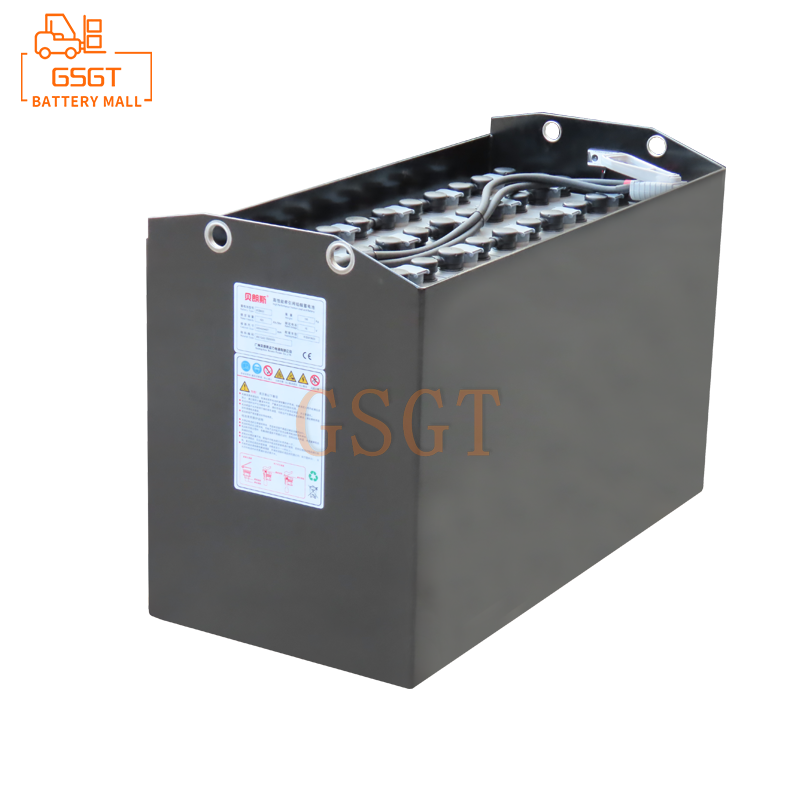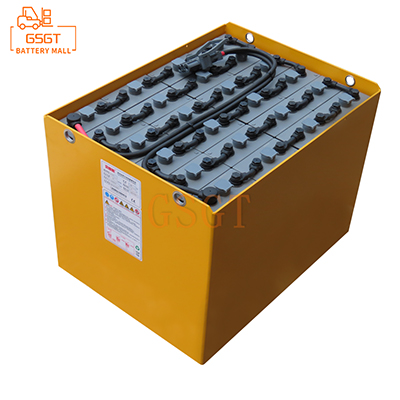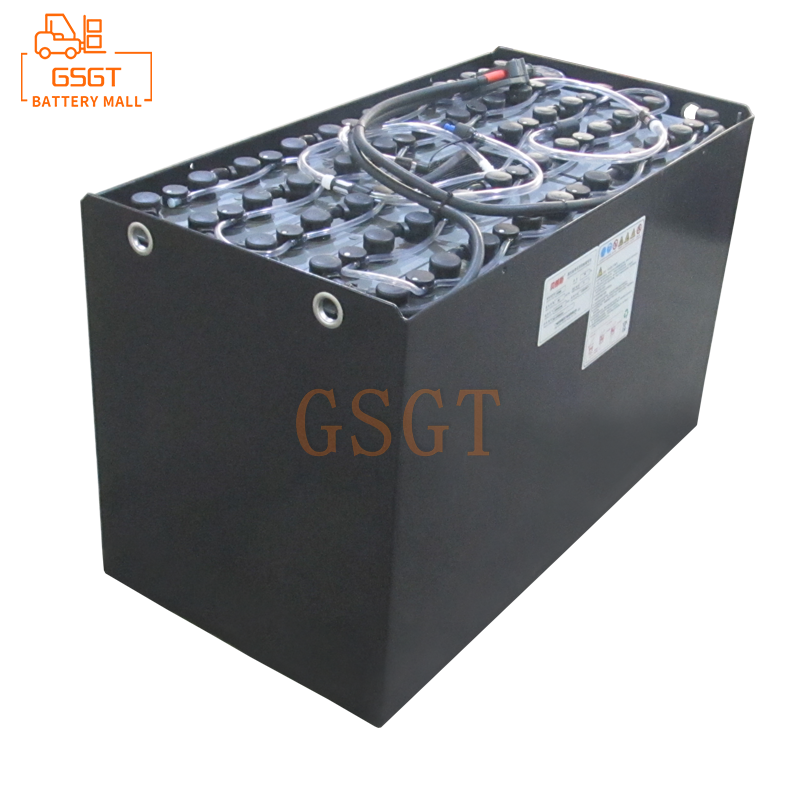Time:2025-05-28 10:39:42
Browse:586
The structure of lead-acid batteries
Structurally speaking, the conductive positive electrode plates of flat lead-acid batteries are in a grid-like honeycomb structure. This design gives them a certain degree of the characteristic of withstanding high charging rates, but it also comes with the problem that the faster the charging speed, the shorter the battery's service life. In contrast, the positive electrode plates of tubular lead-acid batteries adopt a ridge-like structure that extends vertically downward into the electrolyte and are surrounded by cylindrical or square tubes filled with active substances, forming a unique tubular structure. Compared with flat plate batteries, this design significantly increases the surface area for the interaction between lead and acidic electrolyte in the positive electrode plate, not only raising the battery capacity by approximately 15%, but also slightly improving the efficiency during charging.
Analysis of the Characteristics of Lead-Acid Batteries
Cost advantage and long-term usage cost considerations
At first glance, lead-acid batteries have a significant cost advantage in the market. Whether it is flat lead-acid batteries or tubular lead-acid batteries, their procurement cost usually only accounts for about 30% of the total cost of ownership. Although tubular batteries are about 10% more expensive than flat lead-acid batteries, their overall purchase price is still relatively affordable compared with other types of batteries. However, we cannot merely focus on the procurement cost; we also need to comprehensively consider the subsequent usage cost. The lifespan of lead-acid batteries is influenced by multiple factors, such as battery quality, usage methods and frequency, charging process and charger quality, maintenance conditions, and application environment. Under normal circumstances, between 1,500 charge and discharge cycles or over a period of three to seven years, most lead-acid batteries can provide reliable power for forklifts. In some light usage scenarios, well-maintained batteries can even last for 10 years or longer. However, if the above-mentioned influencing factors are ignored during use, the battery life may be significantly shortened, thereby increasing the long-term usage cost.
Charging characteristics and time management
The charging speed of standard lead-acid batteries is relatively slow, with a charging efficiency typically around 75%. This means that there is a difference between the actual amount of electricity input into the battery and the amount paid, and the heat generated during the charging process requires a relatively long time to cool down. Although current charger technology has advanced and can accelerate the charging speed to a certain extent, there are still many limitations, such as the need for weekly equalization charging to ensure stable battery performance. For forklift applications that operate multiple shifts, this charging characteristic may lead to limited operational efficiency, as a long cooling time is required after each charge before it can be put back into use. Therefore, when choosing lead-acid batteries, enterprises need to fully consider their own shift arrangement and time management, and reasonably plan the charging process to avoid affecting the normal operation of forklifts due to excessively long charging and cooling times.
Warehouse occupation and space planning
In application scenarios where multiple shifts are operated, lead-acid batteries often require dedicated battery replacement rooms, which undoubtedly occupies valuable warehouse space and resources. Considering the increasingly high cost of modern warehousing and logistics space, this factor cannot be ignored. When enterprises plan the battery usage scheme for forklifts, they must take into account the actual spatial layout and operational requirements of the warehouse, and weigh whether there is sufficient space to set up a battery replacement room and related supporting facilities. If space is limited, it may be necessary to reevaluate the feasibility of the lead-acid battery solution, or optimize the spatial layout to reduce the impact of lead-acid batteries on warehouse space occupation.
Operation speed and job adaptability
Due to the relatively inefficient charging and cooling processes, lead-acid batteries perform poorly in high-speed material handling operations (such as two-shift or three-shift operations), which can have a certain inhibitory effect on the operation speed. On the contrary, in operation scenarios where the usage rate of forklifts is relatively low, lead-acid batteries have become a more ideal choice due to their cost advantage and relatively stable performance. For instance, in some small warehouses or factory workshops with intermittent operations, forklifts are not frequently used and the requirements for operation speed are relatively low. At such times, lead-acid batteries can effectively control costs while meeting the operation demands. Therefore, when enterprises decide whether to use lead-acid batteries, they need to precisely match them based on the speed requirements and usage frequency of their forklift operations to ensure that the batteries are highly compatible with the operation scenarios.
Maintenance requirements and maintenance costs
The maintenance of lead-acid batteries is rather complicated. Generally, they need to be watered at least once every two weeks to replenish the hydrogen lost during the charging process, and the watering operation must be carried out when the battery is fully charged. For the daily operation of most enterprises, it is not easy to strictly follow this maintenance requirement. Although maintenance work can be outsourced to a third party, this will undoubtedly increase additional expenses. However, in the long run, outsourcing preventive maintenance may be more cost-effective than the cost loss caused by the shortened battery life due to improper maintenance. Enterprises need to establish a complete battery maintenance record, regularly check the various parameters of the battery to ensure it is in good working condition, so as to reduce maintenance costs and extend the service life of the battery.
Safety risks and protective measures
Lead-acid batteries have certain safety hazards. The harmful substances they contain, such as lead and strong sulfuric acid, may pose a threat to workers' health if not operated properly. For instance, if there is an operational error during the watering process, it is easy to cause acid leakage, which in turn may lead to serious consequences such as employee injuries or equipment damage. In addition, when replacing batteries, since lead-acid batteries weigh several thousand pounds and need to be lifted by elevators or other equipment, there are also certain risk factors in this process. To reduce these safety risks, enterprises must provide comprehensive safety training for their employees to familiarize them with the operation norms and emergency response methods of lead-acid batteries. At the same time, necessary protective equipment such as protective suits, protective gloves and goggles should be provided in the working area, and obvious safety warning signs should be set up. In addition, a strict safety management system should be established, and regular safety inspections of the battery replacement area and equipment should be conducted to ensure the safety of the operating environment.
Key points for choosing lead-acid batteries
Clarify the usage requirements
Working environment factors: The working environment has a significant impact on the performance and lifespan of batteries. In high-temperature environments, the chemical reaction rate inside lead-acid batteries accelerates, which may lead to increased water loss and accelerated aging of the plates. Therefore, high-temperature resistant lead-acid batteries should be selected and necessary heat dissipation measures should be taken. In low-temperature environments, such as cold storage, the viscosity of the electrolyte in lead-acid batteries increases, the internal resistance rises, and the battery capacity will significantly decrease. At this time, lithium batteries with excellent low-temperature resistance may have more advantages. However, if lead-acid batteries are still chosen, a dedicated heating device needs to be equipped to ensure that the batteries can operate normally in low-temperature environments.
Working hours and intensity: It is crucial to select a battery of the appropriate capacity based on the working hours and intensity of the forklift. If a forklift needs to operate continuously for a long time, such as running in multiple shifts, or frequently carrying heavy loads and traveling long distances, then a large-capacity and high-endurance battery is an inevitable choice. For instance, in large logistics warehouses, forklifts need to move goods non-stop throughout the day. At this time, large-capacity lead-acid batteries should be equipped to ensure the forklifts can operate continuously and stably, reduce the frequency of charging, and improve work efficiency. On the contrary, for forklifts that operate intermittently and for short periods of time, small-capacity batteries can meet the requirements, avoiding cost waste caused by excessive battery configuration.
Forklift types and specifications: Different types and specifications of forklifts have different requirements for battery voltage, capacity, size and weight, etc. Before purchasing a battery, be sure to carefully check the technical specification sheet or nameplate of the forklift to clearly understand the specific parameters of the battery required. For instance, a small electric pallet truck may only require a 24V battery with a relatively small capacity, while a large electric forklift needs a higher voltage (such as 48V) and a large-capacity battery to provide strong power support. At the same time, it is necessary to ensure that the size and weight of the battery match the battery compartment and counterweight requirements of the forklift to guarantee the stability and operational safety of the forklift.
Pay attention to battery parameters
Battery type: Lead-acid batteries have low cost and mature technology, but they have low energy density and are difficult to maintain. Lithium batteries have high energy density, long lifespan and simple maintenance, but they are relatively expensive. When choosing battery types, enterprises need to comprehensively consider their own budgets, usage requirements and maintenance capabilities. If the budget is limited and there is some experience and conditions for battery maintenance, lead-acid batteries may be a more suitable choice. However, if one pursues an efficient and convenient user experience and has sufficient financial support, lithium batteries have more advantages.
Voltage and capacity: The voltage must be strictly matched with the design requirements of the forklift. Common forklift battery voltages include 24V, 36V, 48V, etc. Capacity is measured in ampere-hours (Ah), which determines the amount of electricity a battery can store. Generally speaking, for forklifts with an 8-hour working system, batteries ranging from 200Ah to 500Ah can be selected based on the actual working intensity. When choosing the capacity, factors such as the forklift's working load, operating time and operating distance should be fully considered to ensure that the battery capacity can meet the normal operation requirements of the forklift within one working cycle.
Consider battery performance
Charging and discharging efficiency: The charging and discharging efficiency directly affects the operational efficiency of forklifts. Batteries with short charging time and stable discharging performance can enable forklifts to return to working condition more quickly and reduce downtime. The charging speed of lithium batteries is generally faster than that of lead-acid batteries, and their voltage is more stable during discharge, which can provide forklifts with more continuous and stable power output. Lead-acid batteries have problems such as high energy loss and long charging time during the charging process. However, by adopting advanced charger technology and optimizing charging strategies, their charging and discharging efficiency can be improved to a certain extent. When choosing batteries, enterprises should, based on their own operational requirements and time schedules, weigh the differences in charging and discharging efficiency among various batteries and select the most suitable product.
Low-temperature performance: If a forklift needs to operate in a low-temperature environment, the low-temperature performance of the battery becomes a key factor. In low-temperature environments, the conductivity of the electrolyte in lead-acid batteries decreases, the internal resistance of the battery increases, resulting in a reduction in battery capacity and a deterioration in charging and discharging performance. The capacity retention rate and charge and discharge performance of lithium batteries at low temperatures are relatively better than those of lead-acid batteries, making them more suitable for use in low-temperature environments such as cold storage. When using lead-acid batteries in low-temperature environments, additional insulation measures need to be taken, such as installing heating covers on the batteries and storing them in warm indoor Spaces, to improve their low-temperature performance and ensure the normal operation of forklifts.
Safety: The safety of batteries is of vital importance. Products with functions such as overcharge, overdischarge, short circuit and overheat protection should be chosen. For lead-acid batteries, special attention should be paid to preventing safety hazards caused by acid leakage and hydrogen accumulation. For lithium batteries, attention should be paid to the performance of their battery management system (BMS). An excellent BMS can monitor various parameters of the battery in real time, provide all-round protection for the battery, and ensure that the battery operates in a safe state. When enterprises purchase batteries, they should carefully check the safety certification and relevant technical parameters of the products, and choose battery brands and models with reliable safety performance.

$2450

$3405

$3050

$5710

MESSAGE
Professional And Efficient
Security
Affordable Price
Professional Services